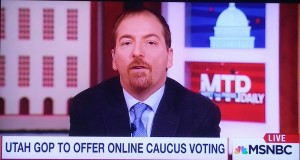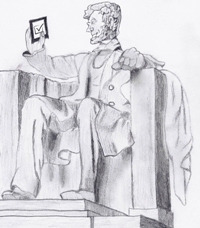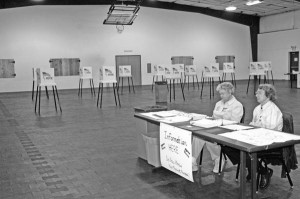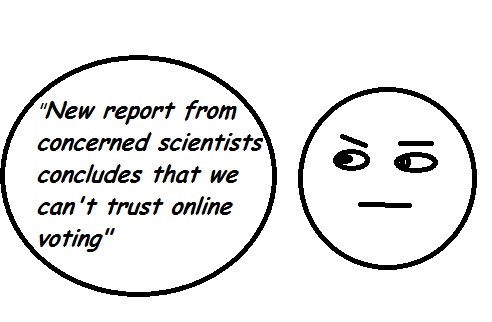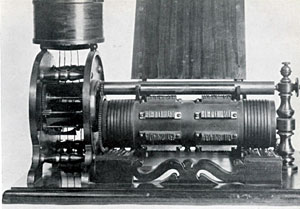
Imagine a world that includes high voter turnout
Cyber The Vote and imagine a world.
A very early post on this blog,”Imagine a World“, described a world of yesterday, when every transactional aspect of our lives was kept track of on paper. It detailed a world of only 20 years ago, when doing any transaction “remotely” usually meant doing it by mail. (For those too young to remember, we used to refer to snail mail as just mail). The world has changed in so many ways, except for the fact that we still vote on paper, and mostly in person. Lately, many have had to wait many hours in line in order to do so.
Sadly, another way that the world has not changed is that low voter turnout, especially among younger voters, is still with us. I do not believe that low turnout and paper ballots have no corrolation. Turnout is suppressed by paper ballots. Turnout will also never be high enough without remote voting.
Imagine a world of high voter turnout. Imagine how different the world could be.
In a future that is rid of chronic low voter participation, many of the things that we decry today as cancers on our democracy would be virtually eliminated.
Today’s world of unlimited outside spending on elections, our “Citizens United” status quo, has money controlling our democracy. Money in elections is currently a red hot political science topic. There are movements to change the U.S. Constitution in order to “get money out” of politics.
The concern over the corrosive effect that big donor money has on politics is understandable, as is all the discussion over it. What is rarely discussed is what the money is spent ON. One of the reasons for this is that the answer is stipulated by everyone: the money is overwhelmingly spent on television advertising.
Negative TV ads are extremely effective at affecting the outcomes of elections. It is almost a given that, if “one side” in an election spends significantly more money on TV than the other, the outcome of any election is all but determined.
Imagine a world where TV attack ads have no determining effect on American elections. Imagine a world where special interests stop spending money on TV ads. When that happens, only our imagininations can limit how much our world will change.
Our democracy hasn’t disappeared. It is just waiting for us to embrace it. There is nothing wrong with our political system that full voter participation can’t fix.
The only way to neutralize the power of the attack ad, and neuter those who pay for them, is to raise turnout in general and among younger voters specifically.
Young voters don’t watch television in general the way older voters do. Specifically, 30 second political attack ads are fairly ineffective on them.
The only way we will be able to significantly increase voter participation among young voters is with online voting. If we can imagine a world with widespread use of online voting, we can imagine a whole new world.
Once we eliminate chronic low turnout, we can eliminate so many other things. Just imagine a world without so many of the seemingly unsolvable challenges it faces. Yes, imagine no war, poverty, hunger, or the significant challenges of pollution and climate change.
Once we let go of that last vestige of our unconnected past – the paper ballot – we can imagine a future with unlimited hope.
Can it be that simple? Yes, it is that simple.
Cyber The Vote and imagine a world.
